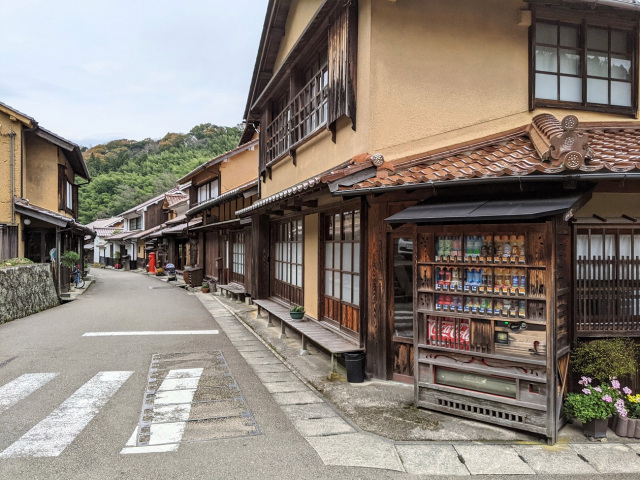
If vending machines existed in the Edo Period, they would’ve looked like this.
There are plenty of historic tourist areas scattered around Japan, where you can walk down beautifully preserved streets and enjoy the atmosphere of a townscape that looks just as it did centuries ago.
That’s all thanks to the great care that’s taken to not disturb the atmosphere of the area, as modern amenities like supermarkets and convenience stores are required to forgo their usual signage for more sedate storefronts that blend into the landscape.
Omori, in the valley of Iwami Ginzan, a World Heritage Site in Shimane Prefecture, is one such town, where visitors are protected from unsightly modern conveniences (save for an asphalt road) to help create the illusion of being whisked back in time to the Edo Period (1603-1868). This was the town’s heyday, when the area was bustling with craftsmen, merchants, magistrates and samurai, who all had ties to the nearby silver mine.
▼ During the 17th century, a third of the world’s silver was produced in Omori.
Today, cafes, stores and restaurants are waiting to be discovered inside some of the beautiful wooden buildings at Omori, and if you find yourself in the town outside of business hours, you’ll be able to quench your thirst at a vending machine that’s also disguised behind a wooden exterior.
The worlds of traditional Japan and modern-day convenience collide here on this street corner, where a Coca-Cola vending machine sits inside a carefully carved and beautifully decorated wooden housing. It doesn’t take much to imagine a samurai in casual hakama streetwear standing in the glow of the lights here, reaching down to retrieve a can of Coke, perhaps popping it into one of his long sleeves to save for later.
After the nearby silver mine closed down in the 1920s, Omori was designated an important traditional buildings preservation district of Japan in 1987, and later designated a World Heritage Site, collectively with the mine, in 2007.
▼ The wooden vending machine frame was handmade even before Iwami Ginzan was registered as a World Heritage Site.
▼ The attention to detail in the design, using wood that perfectly matches the surrounding buildings, makes it look like an old Edo-era signboard.
Omori is still a hidden, off-the-beaten track for a lot of visitors to Japan, but it’s well worth a visit, as it’s a beautiful place to relax and explore away from the crowds. It’s not only home to one of the country’s most elaborate-looking vending machines — it’s home to a samurai residence, merchant houses and gorgeous mountain scenery that allows you to immerse yourself in rural Japan.
Japanese tradition is alive and well in this World Heritage town, where even the local vending machine looks like something out of the Edo Period. This one’s going straight on our list of must-visit vending machines in Japan, alongside other luminaries that sell origami, flying fish soup stock, and roasted sweet potatoes!
Photos © SoraNews24
● Want to hear about SoraNews24’s latest articles as soon as they’re published? Follow us on Facebook and Twitter!
[ Read in Japanese ]
[ Read in Japanese ]

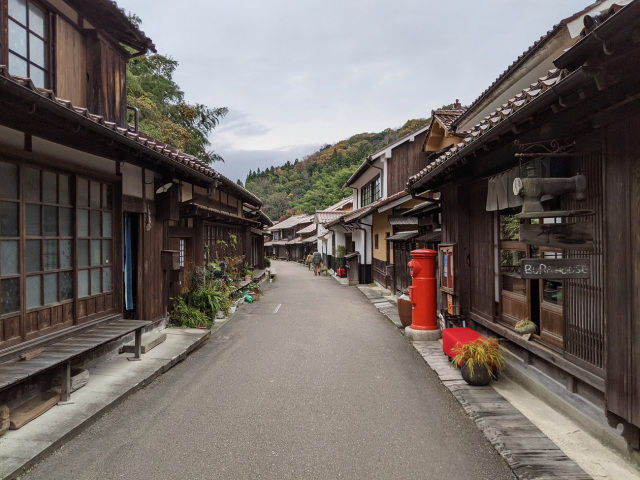
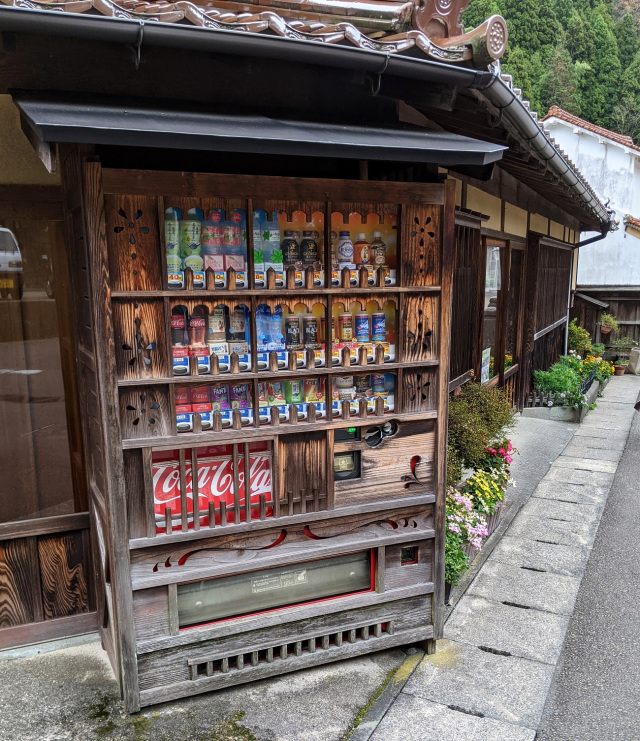
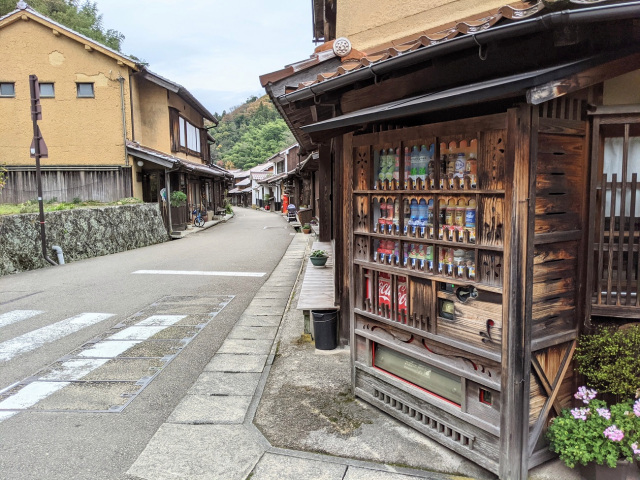
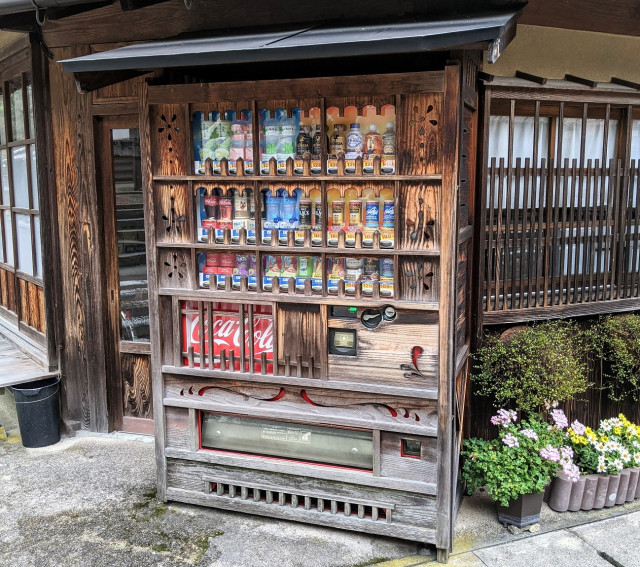
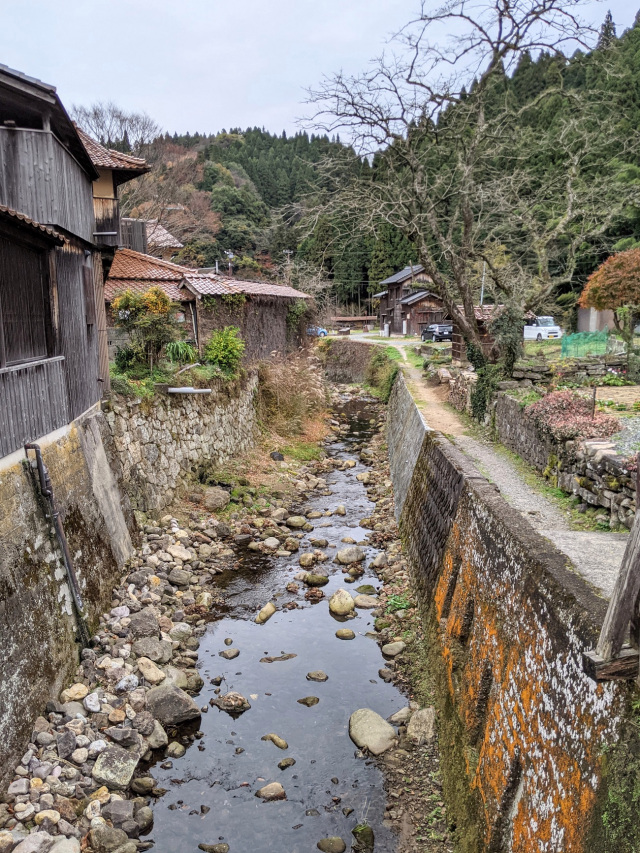
 Tokyo vending machine sells beautiful shugifukuro money envelopes for wedding and other gifts
Tokyo vending machine sells beautiful shugifukuro money envelopes for wedding and other gifts Japanese origami vending machine makes news around the country
Japanese origami vending machine makes news around the country Sushi from a vending machine — would you try it? Mr. Sato did
Sushi from a vending machine — would you try it? Mr. Sato did Mask vending machines pop up at train stations around Taiwan to help commuters avoid fines
Mask vending machines pop up at train stations around Taiwan to help commuters avoid fines Vending machine makes commuters smile at Japanese train station
Vending machine makes commuters smile at Japanese train station Hello, cosmetics! Clinique teams up with Hello Kitty this summer for first-time collaboration
Hello, cosmetics! Clinique teams up with Hello Kitty this summer for first-time collaboration How to order snacks on a Shinkansen bullet train in Japan
How to order snacks on a Shinkansen bullet train in Japan Burger King Japan suddenly adds Dr. Pepper and Dr. Pepper floats to its menu nationwide
Burger King Japan suddenly adds Dr. Pepper and Dr. Pepper floats to its menu nationwide Japan’s new difficult-to-drink-from beer glass protects your liver, but it’s a brutal experience
Japan’s new difficult-to-drink-from beer glass protects your liver, but it’s a brutal experience New samurai glasses are Japan’s latest weird must-have souvenir
New samurai glasses are Japan’s latest weird must-have souvenir Studio Ghibli releases Ponyo donburi bowl to bring anime ramen to life
Studio Ghibli releases Ponyo donburi bowl to bring anime ramen to life New Nintendo Lego kit is a beautiful piece of moving pixel art of Mario and Yoshi【Photos】
New Nintendo Lego kit is a beautiful piece of moving pixel art of Mario and Yoshi【Photos】 Nintendo history you can feel – Super NES, N64, and GameCube controllers become capsule toys
Nintendo history you can feel – Super NES, N64, and GameCube controllers become capsule toys Demon Slayer: Kimetsu no Yaiba gets new roller coaster attractions and food at Universal Studios Japan
Demon Slayer: Kimetsu no Yaiba gets new roller coaster attractions and food at Universal Studios Japan High-fashion Totoro cuddle purse is like an elegant stroll in the forest【Photos】
High-fashion Totoro cuddle purse is like an elegant stroll in the forest【Photos】 “The most Delicious Cup Noodle in history” – Japan’s French Cup Noodle wins our heart【Taste test】
“The most Delicious Cup Noodle in history” – Japan’s French Cup Noodle wins our heart【Taste test】 Starbucks releases a cute Frappuccino and Unicorn Cake…but not in Japan
Starbucks releases a cute Frappuccino and Unicorn Cake…but not in Japan Kyoto Tower mascot termination reveals dark side behind cute Japanese characters
Kyoto Tower mascot termination reveals dark side behind cute Japanese characters McDonald’s Japan’s Soft Twist Tower: A phantom ice cream only sold at select branches
McDonald’s Japan’s Soft Twist Tower: A phantom ice cream only sold at select branches Yabai Ramen: What makes this Japanese ramen so dangerous?
Yabai Ramen: What makes this Japanese ramen so dangerous? Finally! Nintendo Japan expands Switch 8-bit controller sales to everybody, Online member or not
Finally! Nintendo Japan expands Switch 8-bit controller sales to everybody, Online member or not Japanese government wants to build luxury resorts in all national parks for foreign tourists
Japanese government wants to build luxury resorts in all national parks for foreign tourists To combat declining birth rate, Japan to begin offering “Breeding Visas” to foreigners
To combat declining birth rate, Japan to begin offering “Breeding Visas” to foreigners 10 things you should buy at 7-Eleven in Japan
10 things you should buy at 7-Eleven in Japan Studio Ghibli releases anime heroine cosplay dresses that are super comfy to wear
Studio Ghibli releases anime heroine cosplay dresses that are super comfy to wear Woman charged for driving suitcase without a license in Osaka
Woman charged for driving suitcase without a license in Osaka Studio Ghibli unveils My Neighbour Totoro miniature house model
Studio Ghibli unveils My Neighbour Totoro miniature house model Kyoto experiencing problems with foreign tourists not paying for bus fares, but not on purpose
Kyoto experiencing problems with foreign tourists not paying for bus fares, but not on purpose Fighting mild hunger with a Japanese soda that turns into jelly in the stomach【Taste test】
Fighting mild hunger with a Japanese soda that turns into jelly in the stomach【Taste test】 Studio Ghibli’s Howl’s Moving Castle tapestry unveiled in Japan for first time
Studio Ghibli’s Howl’s Moving Castle tapestry unveiled in Japan for first time McDonald’s new Happy Meals offer up cute and practical Sanrio lifestyle goods
McDonald’s new Happy Meals offer up cute and practical Sanrio lifestyle goods Sales of Japan’s most convenient train ticket/shopping payment cards suspended indefinitely
Sales of Japan’s most convenient train ticket/shopping payment cards suspended indefinitely Sold-out Studio Ghibli desktop humidifiers are back so Totoro can help you through the dry season
Sold-out Studio Ghibli desktop humidifiers are back so Totoro can help you through the dry season Japanese government to make first change to romanization spelling rules since the 1950s
Japanese government to make first change to romanization spelling rules since the 1950s Foreigner’s request for help in Tokyo makes us sad for the state of society
Foreigner’s request for help in Tokyo makes us sad for the state of society Ghibli founders Toshio Suzuki and Hayao Miyazaki contribute to Japanese whisky Totoro label design
Ghibli founders Toshio Suzuki and Hayao Miyazaki contribute to Japanese whisky Totoro label design Doraemon found buried at sea as scene from 1993 anime becomes real life【Photos】
Doraemon found buried at sea as scene from 1993 anime becomes real life【Photos】 Tokyo’s most famous Starbucks is closed
Tokyo’s most famous Starbucks is closed Princesses, fruits, and blacksmiths: Study reveals the 30 most unusual family names in Japan
Princesses, fruits, and blacksmiths: Study reveals the 30 most unusual family names in Japan Pick a beautiful blossom from Shinjuku Station’s limited-time flower vending machine
Pick a beautiful blossom from Shinjuku Station’s limited-time flower vending machine Nara unveils new vending machines that sell deer crackers
Nara unveils new vending machines that sell deer crackers Weird Japanese vending machine comes with a heartwarming twist
Weird Japanese vending machine comes with a heartwarming twist Some of Japan’s most iconic vending machines will soon be no more
Some of Japan’s most iconic vending machines will soon be no more Tokyo gets its first subway station ramen vending machine
Tokyo gets its first subway station ramen vending machine Cat paw button vending machine debuts in Japan to celebrate Cat Day
Cat paw button vending machine debuts in Japan to celebrate Cat Day Vending machine that serves handmade gyoza found in Yokohama!
Vending machine that serves handmade gyoza found in Yokohama! New capsule toy collection features military commander samurai armour from the Sengoku Period
New capsule toy collection features military commander samurai armour from the Sengoku Period Japanese vending machines now sell pandemic goods
Japanese vending machines now sell pandemic goods Fire breaks out near Japan’s Shirakawa-go World Heritage site【Videos】
Fire breaks out near Japan’s Shirakawa-go World Heritage site【Videos】 We hope you’re not thirsty — Tokyo shuts down its vending machines for U.S. president’s visit
We hope you’re not thirsty — Tokyo shuts down its vending machines for U.S. president’s visit Japanese vending machines will now let your buy things using your face
Japanese vending machines will now let your buy things using your face Fan fuses anime and reality in the same frame on tour of real-world Free! locations 【Photos】
Fan fuses anime and reality in the same frame on tour of real-world Free! locations 【Photos】 Japanese stationery vending machine at Haneda Airport is a great option for last-minute souvenirs
Japanese stationery vending machine at Haneda Airport is a great option for last-minute souvenirs Vending machine noodle ice cream: A retro icon in Japan brings joy to a new generation
Vending machine noodle ice cream: A retro icon in Japan brings joy to a new generation How should you use the small hiroen in a Japanese ryokan hotel room?
How should you use the small hiroen in a Japanese ryokan hotel room?
Leave a Reply